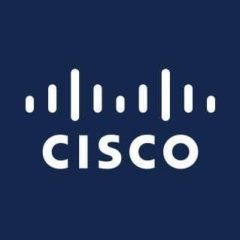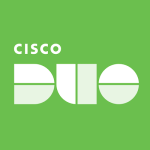What is our primary use case?
One of our use cases is using it for authentication for the wireless. Our internal corporate network is using the Cisco ISE server to authenticate clients and make sure that we have the right clients on the wireless side, as well as on the wired side. We just introduced that about a year ago to make sure all our wired clients are our clients and not some "rando" plugging into the network.
How has it helped my organization?
Definitely, getting away from pre-shared keys has been the biggest key. It is allowing users to connect to the internal network, the employee's network, from anywhere, across the entire US. It is allowing that ease of use.
It's also allowing us to see what's connected to the network. We can see that there are only really clients. We can see what's connected on the wired side and what's getting blocked, and understand [things] from our users. "Okay, that's getting plugged in. What do you guys use this for?" It's adding a layer of defense that's super important to our organization.
I don't think we've gotten away from trust completely, but it has helped a lot. It's allowed, on the server side and on the infrastructure side, to allow certain clients. We don't have to trust the client necessarily. We know that that's a corporate client and we don't have to play any guessing games. The corporate client that we want on that specific network is going to have the right cert and the right thing. It allows access control without a lot of human involvement.
It's helped significantly. We have fewer IoT devices on internal networks and that's the key. Your clients have the right firewall protections and the right anti-virus. Those are on the internal network so you're not putting stuff [on it] that you don't know whether it has a security vulnerability or if it's easily hacked. You're allowing those to be in separated networks that silo them off with a PSK. And you're keeping the internal network to clients that you know are protected.
What is most valuable?
[One of the most valuable features] is just the ease of use. It's pretty simple to set up certs that we can add to our clients to make sure that they connect properly, [as is] whitelisting Mac addresses.
It also integrates really well with some of our other services like ServiceNow. A ticket comes in and then, boom, it's automatically going to the ISE, and then ISE is allowing that client with that Mac address to get on the network easily.
[In addition, regarding establishing trust for every access request, no matter where it comes from] it does the job. It's a perfect solution in order to manage a large corporate network.
It allows that access control [for a distributed network]. That's super significant. It allows you to segment things and allows only certain devices to access the network.
What needs improvement?
Automation [is an area for improvement]. It seems like everywhere I look, automation is super important. Automation and integrations. That's the area it could be improved, as we get more and more away from a lot of human involvement and [into] machine learning and just trusting that these systems could automatically help us.
For how long have I used the solution?
My name is Edward Martinez. Network engineer. Our company has about 5,000 employees, and we're in the beverage industry.
[I've been using Cisco ISE (Identity Services Engine)] ever since I started. That was one of the main services that I had to understand and get involved with as soon as I started at our company.
What do I think about the stability of the solution?
I haven't had many issues in terms of its stability. It doesn't really ever go down. Anytime we ever have any issues with it, it's usually human error.
How are customer service and support?
In the past, I've always had pretty good support from Cisco. Their TAC is really good. They're pretty straightforward. I haven't had many experiences with ISE, honestly. It works so well we haven't had to reach out too much.
I would rate their support about a nine out of 10. It works most of the time. It depends on the engineer you run into. It depends on the people you deal with.
How would you rate customer service and support?
Which solution did I use previously and why did I switch?
[The main challenge] was authentication and not using PSK, traditional pre-shared keys. They wanted to get away from pre-shared keys; people share them. They wanted something that would allow clients to just connect automatically, not have a pre-shared key, and be secure. That's the most important part, making sure that the right clients are getting on our internal corporate network.
[Our company] was just using PSK and that solution was really built around access control of our corporate networks. They were using PSKs at every site and rotating those PSKs, or had site-specific PSKs. Now, when somebody comes into the office, they can just connect to the employees' network automatically, and it's the same across the board at every site.
It was this idea that we needed to simplify things. We needed to make it easier on our users to go into an office and connect to the internet and not have to ask an IT guy there or make a ticket. That was the important part.
How was the initial setup?
I've just been involved with the secondary deployment, using the ISE on our wired ports.
It was pretty straightforward. It was funny. We did it during COVID so it was really easy when nobody was in the office to implement the solution. It kind of worked out that way, when there was nobody in the office.
But otherwise, people have started to come back and we haven't had really many issues in terms of authentication. It's really easy. People have wired in and if their client has the right cert, it's been a breeze. They've been authenticated and it takes a minimal amount of time.
What about the implementation team?
We have an operations partner that we deal with pretty often. It's an Austrian company, NTS. They work with Cisco a lot on our solutions and, obviously, we're evaluating it with them and then making choices based off of that. I'm the onsite hands. I do a lot of the configuration on the switches, but they're doing a lot of the advising.
What was our ROI?
You're seeing less tickets and you have fewer security issues. I think the return on investment is there. It has really improved our situation in our corporate offices.
What other advice do I have?
Resilience is super important. The solution needs to be able to hold up and promise what it [intends] to deliver. In cyber security, that's super important because if you have any slight exploit, you're going to have malware attacks, ransomware attacks. That's [a] big [issue] in our company as, more and more, you hear about legacy systems being affected. These legacy systems sometimes don't go away. Sometimes you need them. You have to do your best to either patch them up or protect them either through a firewall or an access control system.
[It's about] protecting the network infrastructure from exploits and really allowing us to segment IoT devices and the corporate network. And because [on] the corporate network, once you get into it, there really isn't anything protecting against accessing critical storage systems, accessing mission-critical servers, [or] our sales numbers, it's super important that we have the ISE so that we're only allowing the things that we want into the network that we trust.
[What I would tell leaders who want to build more resilience within their organization would be] evaluate solutions, prioritize it, get manpower behind it. Also, too often they put cyber security on the back burner. They're trying to maintain operations and sometimes cyber security can get in the way of operations. But trust that system, once you build it up, will protect you and that it's worth the investment in terms of money, labor, and time.
Which deployment model are you using for this solution?
On-premises
Disclosure: I am a real user, and this review is based on my own experience and opinions.















